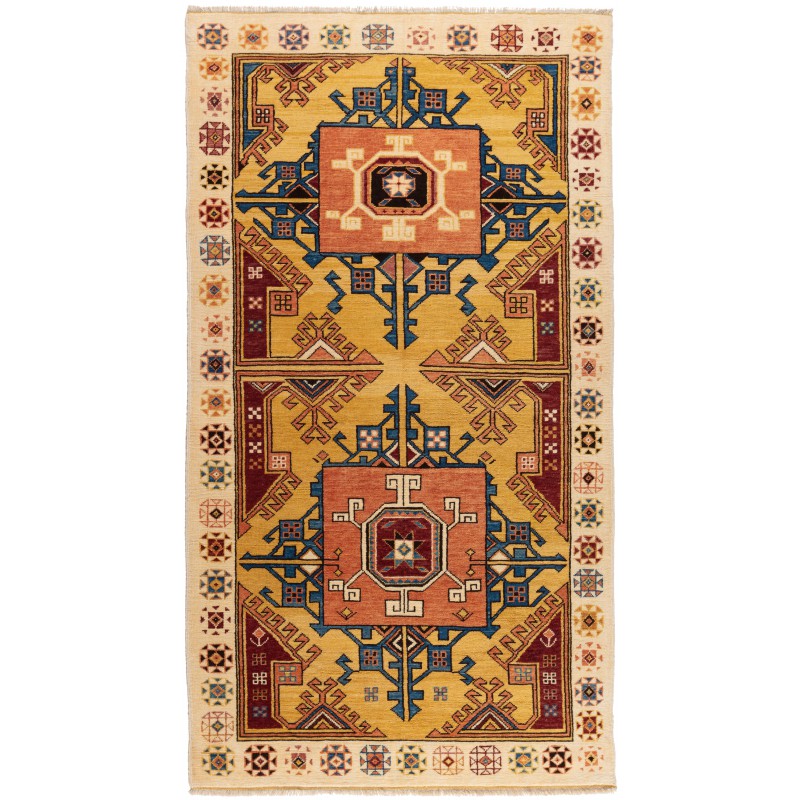
- Stock: In Stock
- Model: C50300
- サイズ: 124cm x 221cm
この絨毯の情報は、1993年にE. Heinrich Kirchheimが執筆した「Orient Star – A Carpet Collection」(Hali Publications Ltd)の第135号から取られています。この特に優雅な大きなメダリオンパターンのデザインは、トルコの中央アナトリア地方、コンヤ地域の17世紀の絨毯に由来しています。ブラシュリー(荒く描かれた)な中央フィールド、境界線のドローイング、およびパレットを囲むヴァインスクロールは、黄色地のコンヤ絨毯の特徴です。専門家の間では、アナトリアの絨毯やキリムは、古代の価値やアイデアの象徴を記録していると信じられています。この伝統は何千年も前にさかのぼり、産業時代にのみ追いやられました。アナトリアのキリムのデザインの伝統は、たぶんパイル織りの絨毯がより貴重に見え、何千年も前から既に高い威信のある価値を持っていたという事実に、その幸運な生存を負っているでしょう。そのため、キリム織りは長い間、破壊されることなく、完全な文化的な文脈の中で静かに生き残ることができました。この絨毯のデザインは解釈され、柔らかい色が選ばれています。
The source of carpet comes from the book Orient Star – A Carpet Collection, E. Heinrich Kirchheim, Hali Publications Ltd, 1993 nr.135. This exceptionally elegant, large medallion-pattern design 17th-century carpet from the Konya region, Central Anatolia area of Turkey. Vine scrolls surrounding the brusquely outlined central fields, the border drawing, and the palette are characteristic of yellow-ground Konya carpets. Among specialists, Anatolian carpets and kilims are believed to record symbols of ancient values and ideas. This tradition dates back several millennia and was only displaced during the industrial age. The Anatolian kilim design tradition probably owes its lucky survival to the fact that pile-woven carpets look more precious and would already have had a higher prestige value several millennia ago. Kilim weaving was, therefore, able to survive undisturbed within an intact cultural context for a long period of time. The design of this rug is interpreted and soft colors are chosen for this rug.
